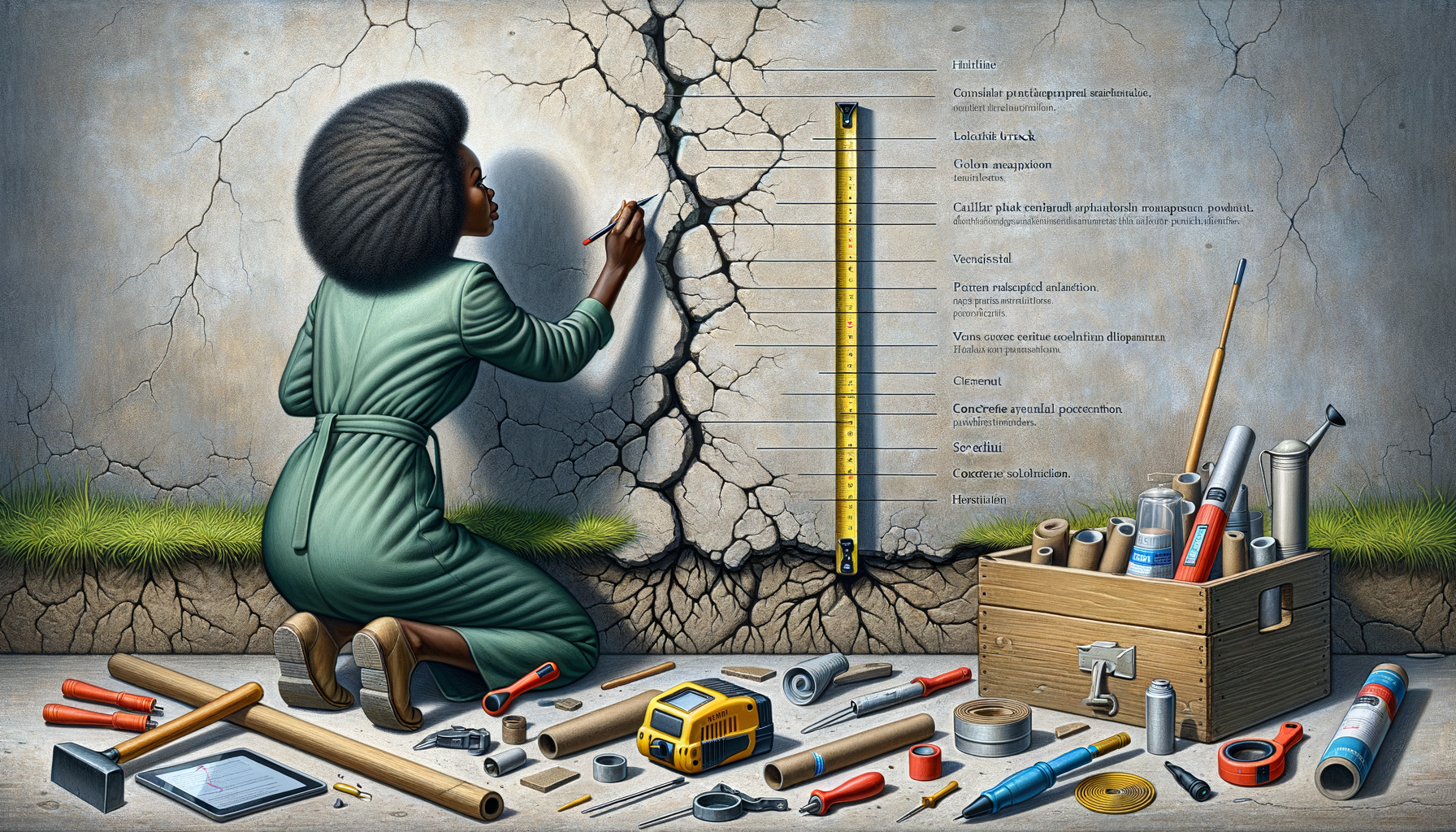Why Do Foundations Crack?
Moving Soil
- Expanding soils: Some soils, like clay, swell up when wet and shrink when dry. This can make your foundation crack.
- Loose soil: Soil that isn’t packed well can settle over time, creating gaps under the foundation and causing cracks.
Poor Building
- Cheap materials: Using bad materials during construction can make the foundation weak and crack.
- Improper concrete curing: If concrete doesn’t dry properly, it might crack as it settles.
Weather Changes
- Freezing and thawing: In cold places, the freezing and thawing of soil can put a lot of pressure on the foundation.
- Droughts and heavy rain: Long dry periods can make soil shrink, and heavy rain can make it swell, stressing the foundation.
Types of Cracks and What They Mean
Hairline Cracks
- Mostly surface level and cosmetic: These are very thin cracks under 1/16 inch wide. They are usually from the concrete drying out and are not serious.
Vertical Cracks
- Common but should be watched: Found in poured concrete foundations, these cracks need to be monitored for changes over time.
Diagonal Cracks
- Show uneven settling: These cracks run at an angle and suggest that different parts of the foundation are settling at different rates.
Horizontal Cracks
- Sign of big structural problems: These cracks are serious and usually indicate extreme pressure from the outside soil, which could mean the foundation walls are bowing.
Stair-Step Cracks
- Seen in brick or block foundations: Look like a staircase and suggest movement in the foundation, often from soil pressure or settling issues.
Checking and Finding Cracks
Tools You Need
- Flashlight
- Measuring tape
- Foundation crack monitor
How to Inspect
- Look at both inside and outside walls: Check both the inside and outside of your home’s foundation for cracks.
- Write down crack details: Note the size, direction, and location of cracks.
- Measure cracks: Use a measuring tape to see how wide and long the cracks are and if they change over time.
When to Get Help
- Cracks keep getting bigger: If cracks are growing, call a professional.
- Moisture or leaks: These can point to serious issues.
- Many small or big cracks: If many or big cracks appear, call an expert.
Fixing Small Cracks Yourself
What You Need
- Epoxy or polyurethane injection kits
- Concrete patching compound
- Waterproofing sealer
How to Fix Cracks Step-by-Step
- Clean the crack area: Make sure the area around the crack is clean.
- Apply the filler: Follow the kit instructions to fill the crack.
- Smooth the surface: Once the filler is nearly set, smooth it out.
- Let it dry: Give the repair time to cure before it gets any stress or moisture.
Professional Fixes for Bigger Problems
Foundation Piers
- Steel or helical piers: These go deep into the ground to stabilize the foundation by reaching solid soil or rock layers.
Slabjacking
- Lifting sunken areas: A special mixture is pumped under the slab to lift it back up.
Carbon Fiber Straps
- Strengthen cracked walls: These straps are attached to walls to give extra support.
Preventing Future Cracks
Managing Water
- Good drainage: Ensure water flows away from the foundation.
- Maintain gutters and downspouts: Keep them clean to stop water from pooling around the foundation.
Soil and Yard Care
- Don’t plant trees too close: Tree roots can mess with the soil near your foundation.
- Keep soil moisture steady: Prevent soil from drying out or getting too wet.
Regular Checks
- Inspect the foundation often: Make this a regular part of home maintenance.
- Fix small issues quickly: Small problems can become big if ignored.
Busted Myths
Cracks Always Mean Huge Repairs
- Not all cracks are serious: Many cracks are minor and can be fixed easily.
DIY Can Fix Everything
- Experts are needed for serious issues: Some problems need professional help.
Small Cracks Are Okay
- Small cracks can become big issues: Monitor all cracks, no matter how small.
Extra Help and Resources
Local Help
- Building codes: Check local guidelines for building and repairing.
- Local inspections: Use local services for inspections.
Professional Help
- Certified repair experts: Hiring certified experts ensures good work.
- Structural engineers: For big issues, an engineer can offer a detailed look.
More Information
- Books on home care: There are many books to learn from.
- Online forums: Places to ask questions and get advice from homeowners.
Summary and What to Do Next
Keeping your foundation in good shape is key to a safe and valuable home. Regular checks, proper care, and timely fixes can save you from costly problems. If you think there’s a serious issue, get a professional to look at it. Stay on top of things, and keep your home strong and safe.
For expert help, contact our certified foundation repair professionals today!


Leave a Reply